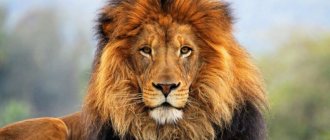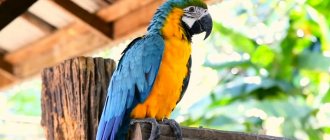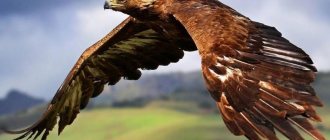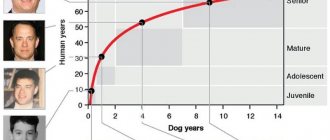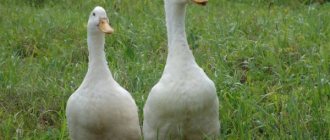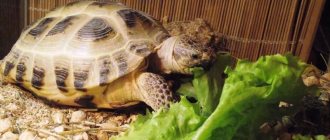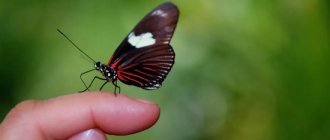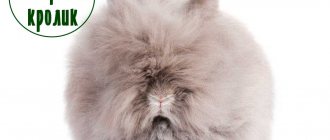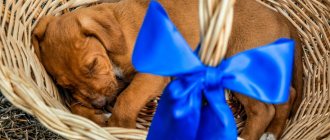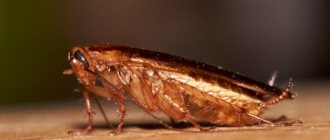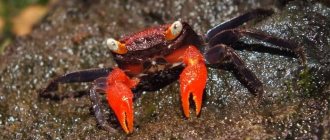Expert opinion
Kosheleva Maria Andreevna
Farmer with 15 years of experience raising goats and cows.
Cows are considered the most popular representatives of cattle both in Russia and in other countries. To obtain high-quality products, the breeder provides the animal with ideal housing and nutritional conditions. In the article we will talk about how many years cows live on average, depending on their housing conditions.
How long do cows live?
On average, a cow can live up to 22 – 24 years. There are exceptions and there are centenarians whose life expectancy goes beyond 30 years.
However, it is not economically profitable to keep her until she is very old, because she can no longer give birth, does not produce milk, and her meat is of poor quality. Bulls live significantly less - about 15 years.
Life expectancy in some countries
The lifespan of each cow is directly affected by living conditions, the purpose of its maintenance and its geographical location. Each country has developed its own specific view and attitude towards raising this cattle.
In Russia
Livestock farming in Russia is currently poorly developed. In the sense that there are cows, but they have a very consumerist attitude aimed at getting financial benefits faster.
So cows live here on average 8–9 years. They are not properly cared for on all farms, and productivity is often increased by using chemicals. In total, this affects the well-being of cattle.
In India
In this country, cows have the highest life expectancy than anywhere in the world. The reason for this is the sacred status of this pet. And for a Hindu there is no sin worse than killing a cow. After all, for them she is a living personification of wisdom, modesty, calmness and kindness.
Here the cow can safely walk wherever she wants and anyone can feed her. In such conditions, she can live to her ripe old age - 40 years.
In Israel
Israel, when raising cows, places a greater emphasis not on meat products, but on dairy products. Every year milk production exceeds 14 thousand liters.
Burenki live here for quite a long time - up to 38 years. Comfortable conditions are created for them. And productivity is increased due to new agricultural technologies and the use of interesting techniques - daily bathing and pleasant classical music during milking.
In America
The lifespan of a cow in the United States varies greatly depending on the area and breed of the animal. On average it is 22–25 years old. Here the focus is more on meat production, and only then on dairy production.
To increase productivity, both modern technologies and chemical additives are also used.
Watussi
What they look like
This is a wild bull with huge horns. Descendant of a wild tour. The history goes back 6 thousand years. The name Watussi bull was given to the African tribes Tutsi, Rwanda and Burundi. Other tribes (Nkole, Uganda) call it Ankole.
Appearance features:
- body length 2.2-2.5 m;
- height – 170 cm;
- weight in males - up to 700 kg, in females - 450-570 kg;
- horns grow up to 2.5 m;
- have a long tail;
- the coat can be of different colors.
Watussi have a developed instinct to protect their offspring. When getting ready for the night, the adults herd the young ones to the center of the herd. They lie down in a circle, ready to repel the predator at any moment.
The life expectancy of the Ankole-Watussi in nature is 3 decades.
Capabilities
Watussi bulls live in the steppes, savannas and plains. Gathering in herds and leading a nomadic lifestyle. Animals are unpretentious to food. The stomachs are designed in such a way that they are able to obtain the maximum amount of nutrients even from the meager food growing in the vast expanses of hot Africa.
Initially, the Watussi lived in African territory. However, thanks to not being picky about food and care, over time they became widespread in America. And also in Crimea.
Today the Watussi population in America numbers 1,500 animals. But their main habitat remains Africa.
Dependence of cow life on breed
The life of a cow and its duration depend on many factors, including belonging to a particular breed. They are divided into 2 types - meat and dairy.
However, many farmers keep these cattle to produce not only milk, but also meat. And vice versa.
Dairy
Dairy breeds are kept on industrial farms for an average of 6 years. In exceptional cases, up to 11–12 years. What usually happens is this: a heifer produces offspring 4 or 5 times, and then she is fattened and sent for slaughter.
Meat
In order to obtain tender meat, cows of beef breeds are not brought to maturity, but are sent for slaughter at 3–4 years of age. At this age they reach their maximum weight and do not actively grow further. But every year the quality of meat will deteriorate, and feed will be consumed in the same quantity, which is not economically feasible.
How many years does a cow live?
The conditions of maintenance, care and nutrition of a household are significantly different from production farms.
How long does a cow live at home?
In a household, a cow lives from 12 to 18 years. It receives enough attention and care, and chemical additives are rarely used to increase productivity.
Cattle are sent to slaughter when the amount of milk naturally decreases over the years. Sometimes a cow is perceived as a beloved pet, and this also prolongs its life.
On large farms
On industrial farms, a cow lives on average from 2 to 4 years. The attitude in production is consumerist, because it is simply a business associated with meat and dairy production.
Once the heifer reaches the required weight, she is sent to slaughter. Dairy breeds can linger for up to 6 years.
In nature
There is no exact data on how long cattle can survive on their own in the wild. After all, these are domesticated animals that depend on humans. But the fact that cattle feel better in conditions close to natural is for sure.
A cow on constant free grazing gives a lot of milk and gains weight well.
Conclusion
Each person, having a cow or bull on his farm, can extend its life and productivity. The same can be said about farmers - the life span of an animal depends on conditions , first of all. And this:
- A warm barn, the temperature in which in winter will not drop below 10 degrees;
- Healthy, nutritious food all year round;
- Veterinarian care, regular examination.
In order for there to be a normal amount of milk and it to be of high quality, the cow needs to be well fed with nutritious food. If the food is dry and non-nutritious, then you should not expect large milk yields.
How long does a bull live and the main factors of animal longevity?
On average, a bull lives up to 15 years. On livestock farms for meat production, the lifespan is reduced to 1.5–2 years, upon reaching a body weight of 500–600 kg.
The main factors influencing the lifespan of a bull:
- Climate and weather. Life is shorter in harsh weather conditions.
- Locality of residence. There are places where the cow is sacred, accordingly she receives privileges in care and lives until her natural death. And there are places with purely consumer relations, cows do not live there for long.
- Ecology. Smog and smoke have a bad effect on the animal's body.
- Purpose of the content. Breeding males are kept exclusively for reproduction and they live until old age, as long as they can perform their functions. Individuals destined for meat production have a short life.
- Diet. A balanced food composition, green food, vitamin and mineral supplements significantly increase the animal’s well-being and, accordingly, its life expectancy.
It is also important to adhere to hygienic requirements for keeping bulls. After all, cleanliness is the key to the health of the entire livestock.
Yak
Appearance
Yaks are originally from Tibet. These high-altitude animals do not descend below 4000 meters. Appearance features:
- body length: up to 4.3 m for the male, up to 3 m for the female;
- height: up to 2 m for the male, up to 1.8 m for the female;
- weight – up to a ton;
- on the massive head there are horns up to 1 m long;
- there is a hump on the back, which makes it look sloping;
- the body is covered with long, shaggy dark brown or gray-brown hair, from under which the legs are not visible.
Where and how do they live
Wild yaks are listed in the Red Book and live only in Tibet.
Domesticated ones can be found in the North Caucasus territory, in the Republic of Tyva, Buryatia and Altai. And also among the mountain nomads of northern India, China, and Pakistan.
The nature of the animals is ferocious. When meeting a person, the yak attacks without hesitation. Males fight fiercely among themselves for the female.
Yaks are herbivores. They feed on pasture in the morning and evening. During the day, wild cows and bulls rest. They live in small families of up to 5-10 individuals, living up to 25 years. Old bulls leave the herd and lead a solitary lifestyle.
Causes of factors influencing the life expectancy of cows
The life expectancy and productivity of cows increases significantly in a habitat favorable to them. In most cases, the breeder's needs determine the length of the livestock's life cycle. But there are also independent factors that also have a direct impact on this.
Human operation
Cows are bred for two purposes - to produce milk and meat. It is known that meat breeds are not kept for too long; once they reach their maximum body weight, they are sent for slaughter. Dairy breeds are exploited for 6–10 years.
But if we compare how long representatives of two types of breeds live and exclude slaughter, then meat animals would live longer. This is because constant stimulation of milk production takes a lot of energy and resources from the cow. She becomes decrepit and weaker faster. Despite the fact that meat breeds do not waste their potential, but only eat well.
Conditions and care
How and where cattle are kept, and how well they are cared for, greatly influences the quality and number of years they live.
In areas with cold climates, these animals live shorter lives than in countries with mild weather conditions. Walking and communicating with relatives is also important for them.
Pastured animals have a longer lifespan than those kept in a stall. Cows need to move and socialize for good performance and well-being.
When it comes to care, hygiene comes first. Timely cleaning of cattle's housing, as well as their own, maintains normal health and, accordingly, prolongs life.
Feeding ration
Cows live longer if their diet is balanced and enriched with vitamins and minerals. For example, excessive consumption of roughage leads to rapid wear of teeth. As a result, the cattle will quickly lose them and in the future will not be able to eat normally and will weaken and die faster.
Poisonous types of herbs and toxic compounds that accidentally get into food can also cause harm.
Cattle diseases
If hygienic and preventive safety measures are poorly observed, the health of livestock can deteriorate sharply. This is fraught with death if measures to correct the situation and treatment are not taken in time.
The disease weakens the animal physically, it loses weight and cannot produce safe milk, and is not suitable for meat.
The table shows the main diseases of cattle and their symptoms:
| Disease | Symptoms |
| Brucellosis | Birth of a non-viable calf or abortion Swelling of the genital organs and purulent discharge from them Udder swelling Infertility |
| Bovine leukosis | Spreading tumor and impaired hematopoiesis Decreased milk production |
| Contagious dermatitis nodosa | Enlarged lymph nodes Fever Skin nodules affecting the eyes Organ swelling Infertility |
| Leptospirosis | Short-term increase in temperature Abortion Jaundice |
| Bovine tuberculosis | Dry cough Wheezing Fever Hard breath |
| foot and mouth disease | Increased salivation Reducing the amount of milk Fever Ulcers Inflammation of the mucous membranes |
Age of a cow by human standards
Humans live longer than all other mammals. There are tables for comparing the age of an animal with human years:
| Person, year | Cow, year |
| 1 | 0.27 |
| 2 | 0.55 |
| 3 | 0.82 |
| 4 | 1.1 |
| 5 | 1.37 |
| 6 | 1.65 |
| 7 | 1.92 |
| 8 | 2.2 |
| 9 | 2.47 |
| 10 | 2.75 |
| 11 | 3.02 |
| 12 | 3.3 |
| 13 | 3.57 |
| 14 | 3.85 |
| 15 | 4.12 |
Indian bison - gaur
Description
Native to South and Southeast Asia. It lives in Nepal, India, Indochina, and the Malay Peninsula.
Appearance characteristics:
- body length - up to 3.3 m;
- height - up to 2.3 m;
- weight from 650 kg - in females, up to 1500 kg - in males;
- tail length is 0.7-1.15 m;
- horns grow on the head, from 0.6 to 1.15 m long;
- a hump is clearly visible on the shoulders;
- The fur is dark brown or red-brown, and there are white “pants” on the legs.
Behavior in nature
The Indian bison lives in grassy meadows or wooded hills, feeding on green grass. When there is a lack of food, it is content with coarse dried grass and leaves of bushes.
They graze in the first half of the day and in the evening; after lunch they prefer to rest.
Bison live in herds of 8-11 individuals, sometimes 40 animals. The head is the eldest male. The herd usually has one adult male, females and offspring.
Having reached sexual maturity, bulls leave the herd and create their own.
Wild and domesticated
The population of Indian bison is steadily declining due to uncontrolled shooting and attacks by predators, mainly tigers.
According to the latest data, there are about 1000 animals left in the wild. In 1986, these bulls were included in the Red Book.
Domesticated Indian bison are called "gayal" or "mitan". They live in Indian territory (in the states of Manipur, Nagaland) and Manyama.
How can you increase the lifespan of cows?
This issue is particularly relevant for small farms, where the cow is a favorite pet and provides tasty and healthy food.
How to influence life expectancy:
- Daily hygiene – cleansing the skin and udder.
- Preventive veterinary examinations.
- Create a balanced diet of nutritious and succulent food.
- Arrange for the animal to live in insulated premises with clean bedding. In this case, the optimal air temperature is +10°C.
- Avoid high humidity and drafts in the stall.
- Talk affectionately and pet your pet.
With this attitude, the cow has increased immunity to diseases and experiences less stress.
How long do they keep a cow on the farm?
On average, a cow produces milk for 12–15 years. At the same time, she gives birth to offspring every year. After that, the age of the cow increases, but productivity decreases - she begins to age and does not provide any benefit.
Symptoms of old age:
- the amount of milk in milk production decreases;
- decreased appetite;
- increased drowsiness;
- teeth worn and sparse.
At the first signs of aging, it is better to send the cattle to slaughter, so as not to incur financial losses from the imminent onset of natural death.
Bleeding process
Life expectancy of pigs. how long do they live and interesting facts
Typically, bleeding during slaughter takes place with two options for fixing the animal - horizontal and vertical. During vertical bleeding, the carcass is hung upside down by its legs. For this, a special winch is used, which helps to properly hang the animal. If the slaughter takes place in the open air, then instead a tripod, previously made of wood, is used, which serves as a support for the winch and can easily support any weight.
When using the horizontal method of bleeding, without first stunning the animal, you must knock it down correctly and clearly and secure it. To do this, take a rope, how much and what length is determined in advance, the end of which is fixed on the head like a simple bridle, and the loop is placed on the chest, as a result of which the head is pulled up to the loop itself. Then the pelvic part is grasped, the rope is passed through the lower back and pressed at the bottom. After this, only the animal is considered to be correctly restrained and can be easily placed on its side, regardless of its size and total weight.
Periods of a cow's life
To assess the condition of a cow and its life expectancy, it is important to know its main phases of growth and development.
Characteristics of age periods:
- maturation – 1.5–2 years;
- maturity, time of division and lactation - from 2 to 14.5 years;
- aging – from 15 years.
Advice! It is better to buy a heifer between 2 and 4 years of age. At this stage, its productivity is maximum at low financial costs.
At what age is a heifer ready to give birth to calves?
Puberty reaches its apogee in both heifers and bulls at 6–9 months. At the age of 15 months, the female is already physiologically ready for mating and pregnancy.
But for a stable emotional state and to minimize health problems, it is recommended to bring the couple together when she is 18–20 months old and the male is 14 months old.
At what age does a cow begin to produce milk?
The expectant mother produces milk at the end of pregnancy. On average, this occurs at the age of 2 years 4 months. Natural lactation lasts 6 months after calving.
From the moment the calf is born and for the next 5 days, milk has a maximum content of antibodies to form the child’s immune system and protect him from diseases.
Next comes the milking period, which lasts from 10 to 50 days. It is characterized by the establishment of normal milk production. Afterwards, the cow produces maximum milk yield throughout her entire lactation.
Upon completion of this stage, the animal must be given rest. However, on production farms this is not profitable and the cow continues to be artificially stimulated to continue producing milk.
Therefore, a cow in production lives much less years than in a household.
When does milk stop giving?
Under natural conditions, without intervention, a heifer can produce milk for up to 15 years, after which the cow becomes old.
But in industry, animals are exploited at the maximum level using more and more new technologies. And at this rate, by the age of 7, the female’s productivity decreases, and by the age of 13, it is completely reduced to zero. In order not to lose profits on farms, dairy cows are sent to slaughter at the age of 8–10 years.
Asian (Indian) buffalo
Appearance and behavior
Distributed in India, Nepal, Ceylon, Thailand and Cambodia. A close relative of wild yaks, zebu and bison.
In Asia, the bull population is gradually declining as there are fewer and fewer places suitable for habitation.
Appearance characteristics:
- body length – up to 3 m;
- height – up to 2 m;
- weight from 800 to 1200 kg;
- the horns are directed backwards and have a crescent shape;
- sparse wool of a brown shade.
The Indian buffalo spends most of the day in the water and feeds on aquatic plants and coastal grass. Therefore, its second name is “water buffalo”.
It prefers to feed in the morning or evening. During the day it sits in the water to escape the heat and insects.
The character is fierce. Buffalo live in herds of 30 individuals: an old bull, 2-3 young ones and cows with calves.
By what signs can you tell the age of a cattle?
To determine how long a cow has lived, you need to pay attention to its external characteristics. In particular, on teeth and horns. This is a key point when buying an animal.
Signs by horns
This method of determining the years lived is only suitable if the cow has been eating normally.
Throughout a cow's life, rings form on its horns. They are used to count how long livestock live.
The first ring on the horn is formed at 2–3 years. Each subsequent one appears 1–1.5 years after the previous one.
The horns themselves begin to grow from 2 months and increase in length by 1 cm every month.
North American bison
Description
The North American bison is similar in appearance to a bison. External characteristics:
- body length - up to 3 m;
- weight: 1.2 t - for males, 700 kg - for females;
- there is a pronounced hump on the shoulders;
- horns are short;
- males have a mane, females and adolescents have a barely noticeable mane;
- Curly fur of a dark brown color grows on the head, chest and shoulders.
The wild ancestor was twice as large.
Distribution and abundance
Bison lived in southern European territory. Then they spread to Eurasia. To expand their habitats, the animals were resettled in several northern American regions. And today they live in Northwestern Canada and British Columbia.
In ancient times, the population numbered almost 600 million. Due to Europeans killing animals to deprive the local population of food, this figure dropped to 835 animals. Today, about 30 thousand individuals are alive.
There are two varieties: forest and steppe, depending on the habitat. Wild bison have not survived to this day. And modern ones were included in the Red Book.
Character and behavior
Bison's character is calm and balanced. But if a bull is enraged, he becomes aggressive.
Bison live in herds. At the same time, males gather in groups separately from females and young animals. The main one is the eldest bull.
North American bison feed on herbaceous vegetation, moss, tree branches, and lichens. In winter, they forage for food under a layer of snow.
Capable of reaching speeds of up to 50 km/h, albeit on short legs. They swim confidently. The sense organs include smell and hearing. Vision is weak.
Bison live in the wild for up to 2 decades, in protected reserves - up to 25-30.
